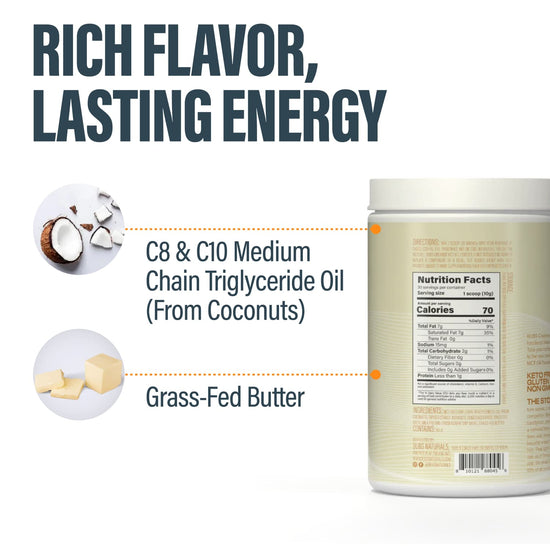Table of Contents
- Introduction
- Types of Coffee Creamers
- The Need for Refrigeration
- Best Practices for Storing Coffee Creamers
- Signs Your Coffee Creamer Has Gone Bad
- Conclusion
- FAQ
Introduction
Every coffee lover has faced the essential question at least once: Does coffee creamer need to be refrigerated? For many, coffee is more than just a morning ritual; it's a comforting companion throughout the day. However, the storage of coffee creamer can sometimes lead to confusion. With options ranging from liquid to powdered, and a variety of flavors and formulations, knowing how to properly store your coffee creamer is crucial for both taste and safety.
Understanding the proper storage of coffee creamer is significant for a few reasons. First, it ensures that we enjoy our coffee with the best possible flavor. Second, it prevents any health risks associated with spoiled products. As we dive into this topic, we'll explore the different types of creamers available, how they should be stored, and the science behind their ingredients. By the end of this article, you'll have a clearer understanding of coffee creamer storage practices and tips for maintaining its freshness.
To make this discussion comprehensive, we will cover:
- The types of coffee creamers available in the market.
- The importance of refrigeration for different creamers.
- Best practices for storing coffee creamers.
- Signs that your coffee creamer may have gone bad.
Let’s embark on this journey to ensure our coffee remains as delightful as ever.
Types of Coffee Creamers
Before we tackle the refrigeration question, it's essential to understand the different types of coffee creamers available. Each type has unique characteristics that influence how they should be stored.
1. Dairy-Based Creamers
Dairy creamers include products like half-and-half, heavy cream, and whole milk. These creamers are made from cow's milk and contain natural fats that add richness to coffee.
- Storage: Dairy creamers must be refrigerated both before and after opening. They are perishable and can spoil quickly if left at room temperature. Manufacturers typically recommend consuming them within 7-10 days after opening.
2. Non-Dairy Creamers
Non-dairy creamers are often made from plant-based ingredients, such as almond milk, soy milk, coconut milk, or a combination of various oils and sugars. They can be flavored or plain and are designed to mimic the creamy texture of dairy creamers without using animal products.
- Storage: Like dairy creamers, non-dairy creamers often require refrigeration after opening. However, some shelf-stable varieties exist that can be stored at room temperature until opened.
3. Powdered Creamers
Powdered creamers are dehydrated versions of creamers that can be mixed with coffee. They are often made from a combination of sugar, oils, and milk derivatives.
- Storage: Powdered creamers do not need refrigeration and can be stored in a cool, dry place. They have a longer shelf life compared to liquid creamers, often lasting up to 24 months when unopened.
4. Flavored Creamers
These can be either dairy or non-dairy and often include added sugars and flavorings such as vanilla or hazelnut. Flavored creamers usually have similar storage requirements to their non-flavored counterparts.
- Storage: Whether liquid or powdered, flavored creamers typically follow the same refrigeration guidelines as their base types.
By understanding these types, we can better appreciate their storage needs and the reasons behind them.
The Need for Refrigeration
Now that we have a grasp of the different types of creamers, let’s dive into the core question: Does coffee creamer need to be refrigerated? The answer is nuanced and depends on the type of creamer we are discussing.
Liquid Creamers
Both dairy and non-dairy liquid creamers should be refrigerated after opening. Here’s why:
-
Perishability: Liquid creamers are susceptible to bacterial growth once opened. The presence of moisture and organic compounds creates a suitable environment for bacteria to thrive, particularly if left at room temperature for extended periods.
-
Manufacturer Guidelines: Most liquid creamers come with labels stating “refrigerate after opening.” This is crucial for maintaining the product's freshness and taste.
-
Safety Recommendations: As a general rule, liquid creamers should not be left out for more than two hours. If you accidentally leave your liquid creamer out, it's essential to check its smell and consistency before deciding to use it.
Powdered Creamers
In contrast, powdered creamers have different storage requirements:
-
Shelf Stability: Powdered creamers are formulated to be shelf-stable, meaning they can safely be stored at room temperature. The low moisture content inhibits bacterial growth, making them less prone to spoilage.
-
Storage Conditions: While powdered creamers do not require refrigeration, they should be kept in a cool, dry place. Avoid exposure to humidity or moisture, which can lead to clumping or spoilage.
The Exceptions
It's worth noting that some non-dairy creamers may be shelf-stable until opened due to preservatives or specific processing methods. Always check the label to determine the appropriate storage practices. If the label indicates refrigeration is necessary after opening, it’s best to follow that guidance.
Best Practices for Storing Coffee Creamers
Proper storage practices can significantly extend the life and freshness of your coffee creamers. Here are some best practices to keep in mind:
For Liquid Creamers
-
Refrigerate Immediately: After using your liquid creamer, return it to the refrigerator right away. This helps maintain its freshness and prevents spoilage.
-
Use Clean Utensils: When pouring creamer, use a clean spoon or pour straight from the bottle to minimize contamination. Avoid pouring unused cream back into the container.
-
Check Expiration Dates: Always pay attention to the expiration dates on your creamers. Even with refrigeration, they should be consumed before the date indicated.
-
Observe Signs of Spoilage: If your creamer has an off smell, changes in texture, or curdling, it's best to discard it.
For Powdered Creamers
-
Store in a Cool, Dry Place: Keep powdered creamers in a pantry or cabinet away from heat sources and moisture. A sealed container is ideal.
-
Avoid Clumping: If you notice clumping in your powdered creamer, it may have absorbed moisture. If the clumps are minor, you can break them apart, but if there’s significant moisture damage, it’s safer to discard it.
-
Check for Freshness: Powdered creamers can last a long time, but checking for any changes in color, smell, or texture before use is a good practice.
Signs Your Coffee Creamer Has Gone Bad
Understanding the signs of spoilage can help prevent any mishaps with your coffee. Here are some indicators that your coffee creamer may no longer be safe to consume:
-
Off Smell: If the creamer has a sour or rancid smell, it's a sign that it has spoiled.
-
Curdling or Separation: For liquid creamers, if you notice clumps or separation, it’s best to err on the side of caution and dispose of it.
-
Change in Texture: A noticeable change in texture, such as a thicker or slimy consistency, can indicate spoilage.
-
Expired Date: If the creamer is past its expiration date, it’s best to discard it.
-
Unusual Taste: If the coffee creamer tastes off or different from how it normally does, it's safer to avoid using it.
Conclusion
In conclusion, whether or not coffee creamer needs refrigeration largely depends on the type of creamer in question. Liquid creamers, whether dairy or non-dairy, should always be refrigerated after opening to maintain their freshness and prevent spoilage. On the other hand, powdered creamers are shelf-stable and can be stored at room temperature, provided they are kept in a cool, dry place.
By following best practices for storage and being mindful of spoilage signs, we can ensure our coffee remains delicious and safe to enjoy. Remember, a well-stored coffee creamer can enhance your coffee experience, making each cup even more enjoyable.
Now that you have the knowledge, how do you plan to store your coffee creamer? Are there any tips or practices you’ve found helpful in keeping your coffee essentials fresh?
FAQ
1. Can I leave coffee creamer out overnight?
For liquid creamers, it’s best to refrigerate them as soon as possible. Leaving them out overnight can lead to spoilage, and they should not be consumed if left out for more than two hours.
2. How long does powdered coffee creamer last?
When stored properly in a cool, dry place, powdered creamers can last up to 24 months when unopened. Once opened, they should be used within a reasonable time frame—usually up to a year.
3. What happens if I use spoiled coffee creamer?
Using spoiled coffee creamer can lead to unpleasant flavors in your coffee and may cause digestive discomfort. Always check for signs of spoilage before use.
4. Are there any non-dairy creamers that do not require refrigeration?
Yes, some non-dairy creamers are shelf-stable until opened. Always check the label for storage instructions to ensure you’re following the best practices.
5. Can I use powdered creamer in hot coffee?
Absolutely! Powdered creamers are designed to dissolve in hot liquids, making them a convenient option for enhancing your coffee.
Written by:

Butter MCT Oil Creamer
BUBS Butter MCT Oil Creamer (formerly Halo Creamer): Scientifically-Backed Brain and Body Fuel
BUBS Butter MCT Oil Creamer is your go-to for clean, fast-acting energy and focus, no crash included. It blends creamy grass-fed butter with fast-acting MCT oil powder (C8 and C10) to kickstart your day and keep you sharp. The MCTs go straight to work, giving your brain a quick boost while the grass-fed butter supports digestion and gut health.
Together, they help curb cravings, keep you feeling full longer, and support steady energy throughout the day—perfect for fueling your mornings or powering through the afternoon slump.
Starts at $37.00
Shop

